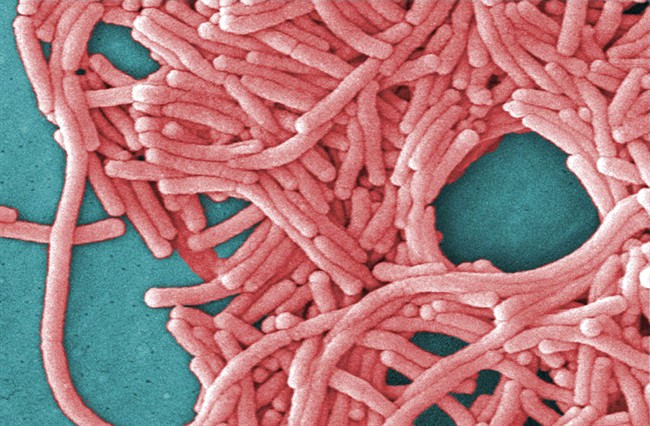MONCTON – There have been four cases of legionnaires’ disease reported in southeastern New Brunswick since mid-June.

That number is unusually high, according to Dr. Yves Leger, the Regional Medical Officer of Health, who noted that the province normally only has less than five cases a year in the whole province.
“We’ve informed the health care community to the cluster that we’ve seen, to make sure they’re aware,” he said. “So if there are any other cases in the community, we’ll find them quickly, get them treated. And, it will help with the investigation. ”
All four cases were diagnosed in older males, Dr. Leger said, and were spread throughout the southeast, not clustered to a single area. He would not specify where they were located.
“We’ve looked at their travel patterns – how they’ve travelled and there’s nothing that indicates that there is a common source for all of these individuals,” he said. “There is, for each of them, one or more potential sources of exposure.”
All four have since made a full recovery.
Legionnaires’ disease is a severe form of pneumonia that can be fatal if left untreated. It is contracted by inhaling water droplets contaminated with the legionella bacteria.
“One person can’t give it to another, “Dr. Leger said. “You have to be infected through an exposure in the environment.”
The bacteria is ubiquitous in New Brunswick and the region. Dr. Leger said it typically grows where water is stagnant and when the temperature is between 20 and 45 degrees.
“For people who are at higher risk, such as the elderly, those with diabetes, those with an underlying lung condition, or who are immunosuppressed, they can get very ill when they are exposed to that bacteria,” he said.
The bacteria can also cause a less severe illness known as pontiac fever. It appears as a flu-like illness, and can go away on its own without treatment.
Legionnaires’ disease, on the other hand, requires antibiotics.
- Honda expected to announce Ontario EV battery plant, part of a $15B investment
- Trudeau says ‘good luck’ to Saskatchewan premier in carbon price spat
- Canadians more likely to eat food past best-before date. What are the risks?
- Hundreds mourn 16-year-old Halifax homicide victim: ‘The youth are feeling it’




Comments